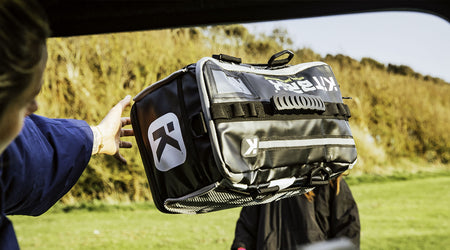
After many countries have recently experienced a heatwave, we have been getting flooded with questions about working out in the heat; what are the effects on your body? What are the benefits? How long will it take me to adjust?
To help answer a few of your questions we have partnered with our distributors over in the United Arab Emirates, Sported to help you beat the heat! If anyone knows anything about working out in high temperatures, it will be them.
Whether you are exercising in the midst of a rare English heatwave, at a training camp in the South of France or perhaps you are preparing for Iron Man in Hawaii, we have put together your go to guide to ensure you can stay safe and active in warmer climates…

Effects of Working Out in the Heat
Even when you aren’t working out or competing, the effects of high temperatures can be felt in your energy levels and throughout your body. On those particularly warm days you may notice you feel more fatigued, sluggish and have increased levels of perceived exertion. These feelings are only exaggerated when working out, even if it is only moderate exercise. You may notice…
-
Increased body temperature
When working out in high temperatures it is inevitable that your core body temperature will also rise.
-
Increased heart rate
As your body temperature rises, your heart rate will increase. Without cool surroundings lowering your body temperature, your heart rate will quicken in an attempt to increase blood flow to the surface of your skin. This will draw blood away from your muscles, causing that higher perceived level of exertion.
-
Increased levels of sweating
Another way your body will attempt to lower your core body temperature is through increased sweating. However if you are exercising in a particularly humid environment, the sweat evaporation that would usually cool you down is not taking place, leading to a higher risk of overheating and heat stroke.
-
High risk of dehydration
As your body’s sweating increases you are at a higher risk of dehydration and with it electrolyte loss. For this reason it is particularly essential to stay hydrated when exercising in heat as you can lose up to 2 litres of fluid per hour. It is important to note that simply drinking water is not enough! Take with you an electrolyte drink with added carbohydrates. These are easier for the body to absorb and will replace what your body has lost.
-
Prolonged recovery time
You may also notice that after working out in high temperatures it will take you longer to recover than it normally does. Heat is an additional stressor on the body so you may need longer rest periods and extra sleep.
For these reasons, working out in the heat can come with added risks so it is essential that you come prepared. Here is how...
- Dress in lightweight, performance wear that will allow your body to sweat freely
- Be vigilant when it comes to staying hydrated- always bring spare gels and electrolytes drinks.
- Gradually increase the heat to allow your body to adjust- you can do this by changing the time of day you exercise.
- Familiarise yourself with the symptoms of heat exhaustion and heat stroke and look out for warning signs. If you notice symptoms such as light-hotheadedness, nausea or muscle cramps, take a break to cool down.
Adjusting to working out in the heat
Working out in high temperatures can be quite a shock to the system, particularly if you are used to cooler climates. But fear not, your body is resilient and adaptable if you just give it some time and practice, 7-14 days to be exact.
In the first few days of working out in the heat you may notice that sessions are not as long or as intense as they are in cooler temperatures. So when you first start, keep those warm ups short to prevent your body from overheating too soon. For this reason, if you are travelling to sunnier shores for a race event, arrive earlier if possible to ensure you are up to speed with the local athletes.
Benefits of working out in the heat
Putting on your running shoes or jumping on your bike in warmer temperatures isn’t all doom and gloom. It can actually elevate your performance and help you to become a better athlete. Here are some of the claimed benefits...
- Increased resilience- Your body will become faster at responding to temperature changes such as earlier sweating and increased blood flow. You will be more adaptable giving you an edge over your competitors.
- Better than altitude training- The physiological changes your body goes through working out in the heat, exceeds the benefits of altitude training. Who knew?
- Increase lactate threshold- Working out in high temperatures will increase your cardiovascular capacity and ability to do intense workouts for longer periods.
- Increase psychological tolerance- Pushing through the uncomfortable barrier of working out in the heat will allow you to perform at your best even in tricky situations. You will become ‘comfortably uncomfortable’.
So if you are looking to break your personal bests this autumn, start training this summer!






0 comments